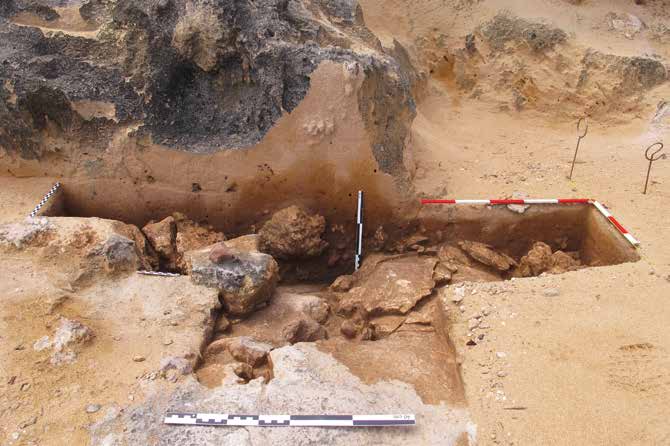Media Release
From: The Royal Society of VictoriaWere there people living in Australia 120,000 years ago?
South-western Victoria has long been the home of the Gunditjmara (or Dhauwurd Wurrung) people, who have famously created and maintained a cultural landscape at Budj Bim for many thousands of years. The eel and fish traps around Lake Condah (Tae Rak) used for aquaculture purposes have been identified as some of the oldest human-made structures in the world, estimated at 6,600 years and actively being considered for inclusion on the UNESCO World Heritage list.
Warrnambool is the South-West Coast's rural city, perched above the shoreline of Lady Bay at the end of the spectacular Great Ocean Road. Famous for its ideal vantage for whale-watching, the city has a habit of collecting rich history, some factual, some less certain; the enticing yet unverified reports by local whalers of discovering an ancient, wrecked Mahogany Ship on the nearby sands of Armstrong Bay in 1847 are the stuff of legend, for example.
Yet right on the city's doorstep is a still more ancient riddle of potential human activity. A "calcarinite" outcrop at the mouth of the Hopkins River, long called Moyjil by the Gunditjmara and named Point Ritchie by European settlers, has been the research focus of a multi-disciplinary team of geologists, archaeologists and palaeontologists for the past ten years. This month the team of experts from Deakin, Federation, Monash and Melbourne Universities has released the findings of their ten-year research project focused on an unusual deposit of shells and burnt stones within the remains of this ancient beach.
What makes the site so significant is its great age. The dating of the shells, burnt stones and surrounding cemented sands by a variety of methods has established that the deposit was formed about 120,000 years ago. This is roughly twice the presently accepted age of arrival of people on the Australian continent based on archaeological evidence.
Professor Jim Bowler is one of Australia's most celebrated geologists. He made the startling discovery in 1969 and 1974 of Australia's oldest human remains at Lake Mungo, a dry lake bed in central New South Wales. A member of the Moyjil team, Professor Bowler asserts that "absolute proof" of a human origin would be the presence of stone artefacts or human remains; neither has been found at the Moyjil site so far, but neither are they found in many of the younger coastal middens in Australia. “A human site of this antiquity, at the southern edge of the continent, has international implications. We recognise the need for a very high level of proof for the site’s origin.”
Archaeologist Professor Ian McNiven, another team member, explained that the team is publishing its results now in order to attract the attention of other researchers with specialist techniques which may be able to conclusively resolve the question of whether or not humans created the deposit.
The study has been overseen by the Moyjil Project Committee comprising the region’s Traditional Owners, Eastern Maar, Gunditjmirring and Kuuyang Maar, as well as government agencies and researchers. The Proceedings of the Royal Society of Victoria are published online, open access through CSIRO Publishing; the Moyjil issue can be accessed at http://www.publish.csiro.au/rs/issue/9309 .
The Moyjil Site has been dated at 120,000 years old, roughly twice the accepted age of the arrival of humans on the Australian continent based on archaeological evidence. The study of the site was overseen by the Moyjil Project Committee, comprised of the region's Traditional Owners (Eastern Maar, Gunditjmirring and Kuuyang Maar), researchers and government agencies. The remains of shellfish, crabs and fish with charcoal, blackened stones and structures resembling fireplaces is consistent with features of much younger "kitchen middens" identified by archaeologists around the Australian coastline. However, seabirds such as the Pacific Gull are known to create similar shell middens, and wild fires could also have contributed to the presence of charcoal and blackened stones. A very high level of proof is required to settle the nature of Moyjil's origins - this will require investment in highly specialised researchers and research techniques. The team is "passing the baton" to the next generation of researchers.




